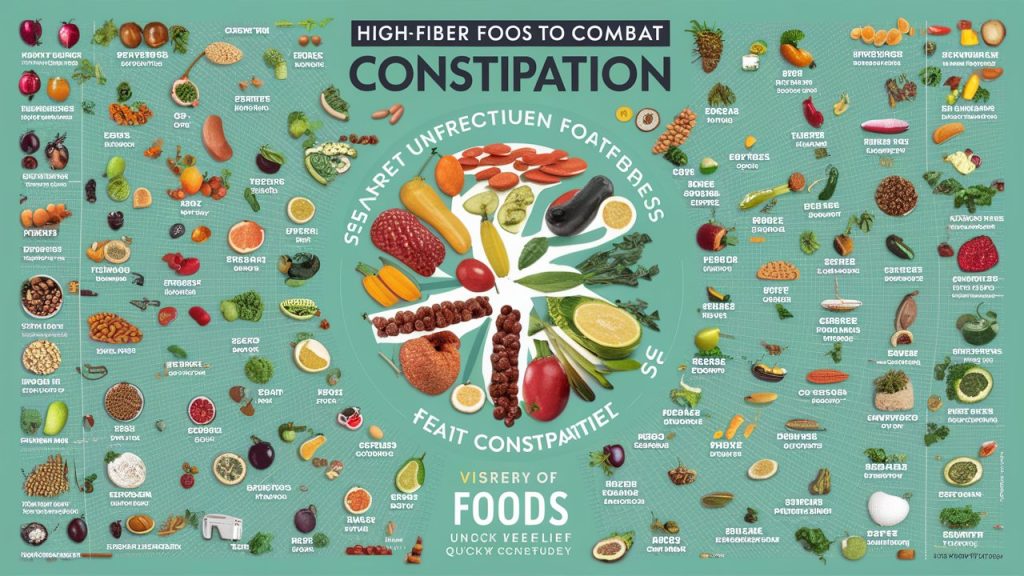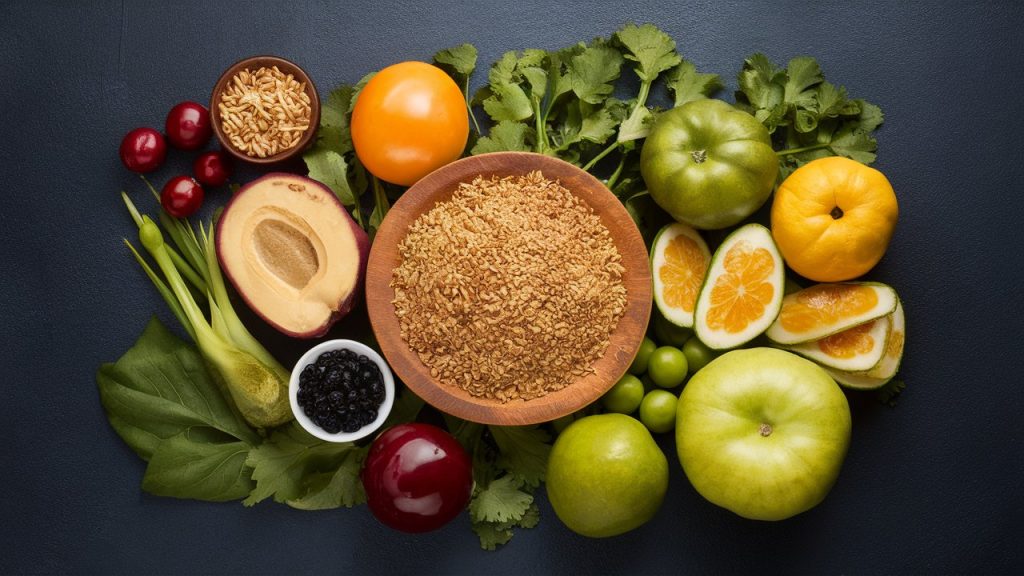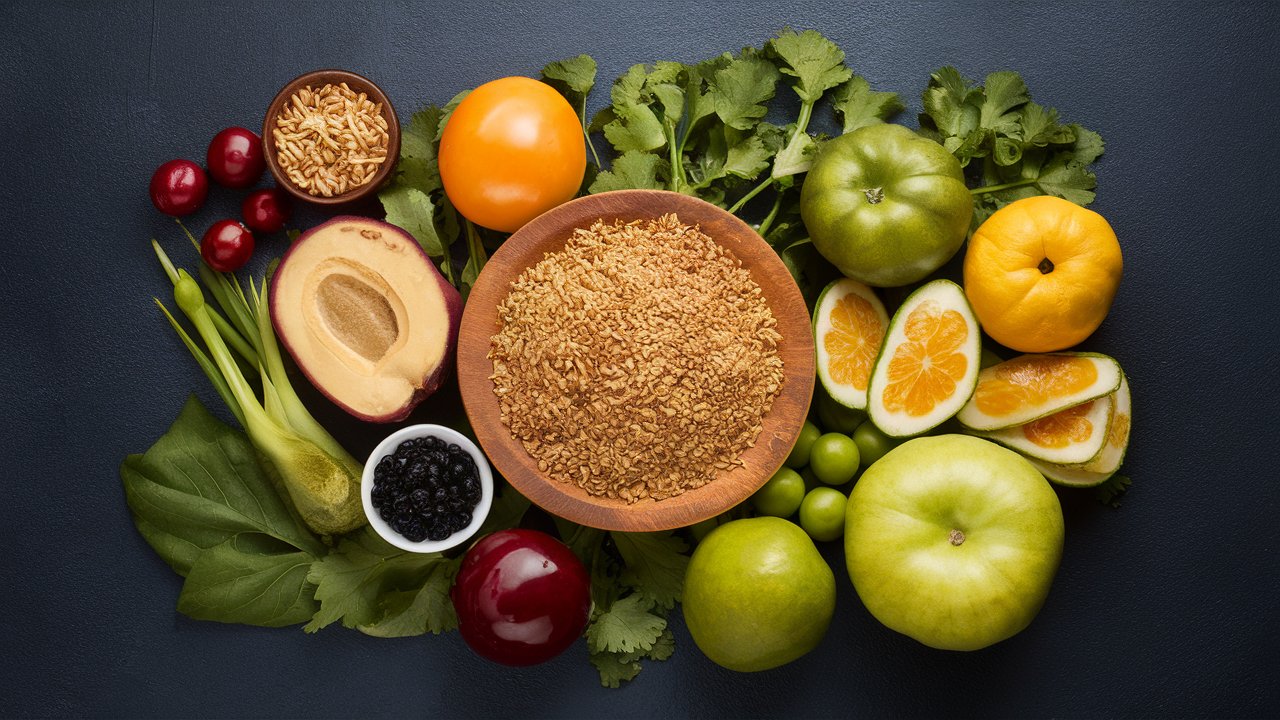Table of Contents
Dealing with constipation can be frustrating and uncomfortable. A high-fiber diet is a natural and effective way to alleviate this issue. This article provides a comprehensive High-Fiber Foods Chart for Constipation, helping you find the best foods to improve your digestive health and unlock relief quickly.
Understanding Constipation

Constipation occurs when bowel movements become infrequent or difficult. Not addressed promptly can lead to discomfort and other health issues.
Causes of Constipation
- Lack of fiber in the diet
- Dehydration
- Lack of physical activity
- Certain medications
- Ignoring the urge to have a bowel movement
How Fiber Helps with Constipation
Fiber adds bulk to your stool and helps it pass more easily through your digestive system. There are two types of fiber: soluble and insoluble.
Soluble Fiber
Soluble fiber dissolves in water and forms a gel-like substance. It helps to soften the stool and makes it easier to pass.
Insoluble Fiber
Insoluble fiber does not dissolve in water. It adds bulk to the stool and helps it quickly move through the digestive tract.
High-Fiber Foods Chart for Constipation
Including high-fiber foods in your diet can significantly improve your digestion. Below is a High-Fiber Foods Chart for Constipation, listing foods rich in soluble and insoluble fiber.
Fruits
- Apples: 4 grams of fiber per medium apple
- Pears: 6 grams of fiber per medium pear
- Berries: 8 grams of fiber per cup
- Oranges: 3 grams of fiber per medium orange
Vegetables
- Broccoli: 5 grams of fiber per cup, cooked
- Carrots: 4 grams of fiber per cup, cooked
- Spinach: 4 grams of fiber per cup, cooked
- Brussels Sprouts: 4 grams of fiber per cup, cooked
Whole Grains
- Oats: 4 grams of fiber per cup, cooked
- Brown Rice: 3.5 grams of fiber per cup, cooked
- Quinoa: 5 grams of fiber per cup, cooked
- Whole Wheat Bread: 2 grams of fiber per slice
Legumes
- Lentils: 15 grams of fiber per cup, cooked
- Chickpeas: 12 grams of fiber per cup, cooked
- Black Beans: 15 grams of fiber per cup, cooked
Nuts and Seeds
- Almonds: 4 grams of fiber per ounce
- Chia Seeds: 10 grams of fiber per ounce
- Flaxseeds: 8 grams of fiber per ounce
- Pumpkin Seeds: 5 grams of fiber per ounce
Tips for Increasing Fiber Intake
Adding more fiber to your diet doesn’t have to be complicated. Here are some simple tips:
Start Slowly
Introduce fiber gradually to avoid bloating and gas. Increase your intake over a few weeks.
Drink Plenty of Water
Fiber works best when you drink enough water. Aim for at least eight glasses a day.
Eat Whole Foods
Choose whole fruits and vegetables over juices. Whole foods contain more fiber.
Include Fiber in Every Meal
Add fruits, vegetables, or whole grains to every meal. This ensures a steady intake of fiber throughout the day.
Benefits of a High-Fiber Diet
A high-fiber diet offers many health benefits beyond relieving constipation.
Improved Digestion
Fiber helps keep your digestive system running smoothly.
Lower Cholesterol
Soluble fiber can help lower harmful cholesterol levels.
Better Blood Sugar Control
Fiber slows down sugar absorption, helping control blood sugar levels.
Healthy Weight Management
Fiber-rich foods are more filling, which can help you maintain a healthy weight.
Common Misconceptions About Fiber
There are some common misconceptions about fiber that need to be addressed.
All Fiber is the Same
As mentioned, there are two types of fiber: soluble and insoluble. Both are important for digestive health.
Fiber Supplements are Enough
While supplements can help, getting fiber from whole foods is best. Whole foods provide other essential nutrients.
Fiber Causes Bloating
Introducing fiber too quickly can cause bloating. Increase your intake gradually and drink plenty of water.
Combining High-Fiber Foods with Exercise

Regular physical activity can complement a high-fiber diet to relieve constipation. Exercise stimulates muscle contractions in your intestines, helping to move stool through your digestive system. A daily walk, a session of yoga, or even light stretching can make a significant difference in your digestive health. Consistent use of our High-Fiber Foods Chart for Constipation will promote regularity. Remember to stay hydrated to maximize the benefits of fiber.
Creating a Balanced High-Fiber Meal Plan
Developing a balanced meal plan that includes a variety of high-fiber foods can keep your diet exciting and compelling. Start your day with a breakfast of oatmeal topped with berries and nuts. Enjoy a hearty salad with chickpeas, spinach, and a side of whole-grain bread for lunch. Dinner can feature a vegetable stir-fry with broccoli, carrots, and quinoa.
High-Fiber Snacks to Keep You Regular
Snacking smartly can help you maintain a consistent fiber intake throughout the day. Keep high-fiber snacks like apples, almonds, or carrot sticks on hand for when hunger strikes. These snacks curb cravings and provide the fiber to keep your digestive system moving. Click Here for more info about Food.
Final Thoughts
Constipation can be a challenging issue, but with the proper diet, relief is within reach. This High-Fiber Foods Chart for Constipation provides various options to help you increase your fiber intake and improve your digestive health. By incorporating these high-fiber foods into your daily diet, you can unlock relief fast and enjoy the numerous benefits of a high-fiber diet.
Remember, it’s essential to start slowly, drink plenty of water, and choose whole foods to maximize the benefits of fiber. You can achieve better digestive health and overall well-being by following these tips and using the High-Fiber Foods Chart for Constipation.

